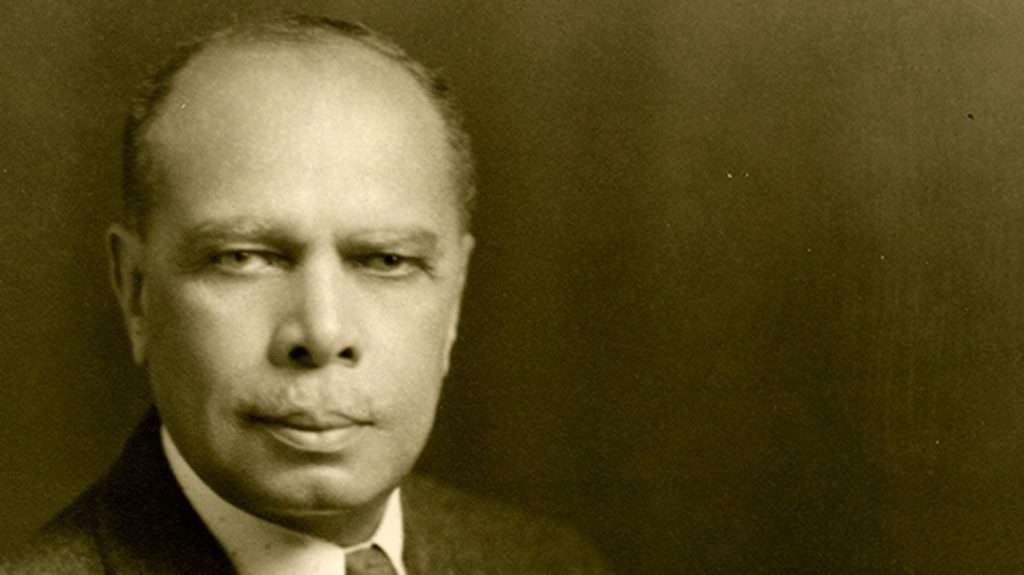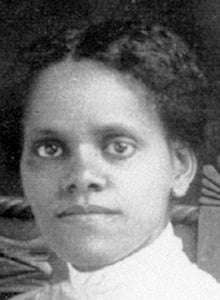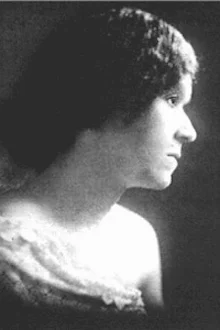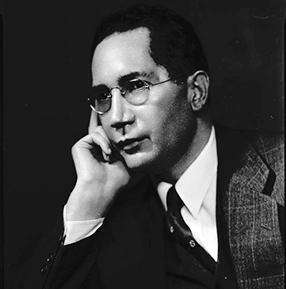The Poets in the Harlem Renaissance
The Harlem Renaissance was a time of unparalleled creativity and intellectual vibrancy in the African-American community. The period, which took place from the late 1910s to the mid-1930s, saw an outpouring of poetry, art, music, and writing from black artists who sought to express their unique experiences and worldview. While the renaissance was centered in Harlem, its influence was felt throughout the United States and beyond. In this blog post, we’ll take a look at some of the most influential poets in the Harlem Renaissance era.
Affiliate Disclaimer: This content contains affiliate links. When you buy through these links, I may earn an affiliate commission.
Langston Hughes, Poets in the Harlem Renaissance

A Harlem Renaissance poet, Langston Hughes is best known for his work celebrating the African American experience. His poems often explored themes of racial pride and injustice, and his work helped to shape the course of the Harlem Renaissance.
Hughes was born in 1902 in Missouri, and he became one of the most prominent poets of the Harlem Renaissance. He moved to New York City in 1926, and his first book of poetry, “The Weary Blues,” was published that same year.
Throughout his career, Hughes continued to explore the African American experience through his poetry, and his work remains an essential part of the Harlem Renaissance canon.
The Weary Blues
Droning a drowsy syncopated tune,
Rocking back and forth to a mellow croon,
I heard a Negro play.
Down on Lenox Avenue the other night
By the pale dull pallor of an old gas light
He did a lazy sway . . .
He did a lazy sway . . .
To the tune o’ those Weary Blues.
With his ebony hands on each ivory key
He made that poor piano moan with melody.
O Blues!
Swaying to and fro on his rickety stool
He played that sad raggy tune like a musical fool.
Sweet Blues!
Coming from a black man’s soul.
O Blues!
In a deep song voice with a melancholy tone
I heard that Negro sing, that old piano moan—
“Ain’t got nobody in all this world,
Ain’t got nobody but ma self.
I’s gwine to quit ma frownin’
And put ma troubles on the shelf.”
Thump, thump, thump, went his foot on the floor.
He played a few chords then he sang some more—
“I got the Weary Blues
And I can’t be satisfied.
Got the Weary Blues
And can’t be satisfied—
I ain’t happy no mo’
And I wish that I had died.”
And far into the night he crooned that tune.
The stars went out and so did the moon.
The singer stopped playing and went to bed
While the Weary Blues echoed through his head.
He slept like a rock or a man that’s dead.
Poets in the Harlem Renaissance: Jessie Redmon Fauset

Jessie Redmon Fauset was born in New Jersey in 1882, she moved to Philadelphia at a young age and later studied at Cornell University. After graduation, she moved to New York City and quickly became involved in the literary scene of the Harlem Renaissance.
Her first book of poetry, The Sherry Artisans, was published in 1924, followed by three more collections over the next decade. Fauset’s poetry is known for its ability to capture the spirit of the Harlem Renaissance.
She often wrote about the joys and challenges of being an African American woman during this time period. Her work helped to raise awareness of the African American experience and gave voice to a generation of poets. Read ‘Enigma’ it’s one of Fauset’s well-known pieces.
Enigma
There is no peace with you,
Nor any rest!
Your presence is a torture to the brain.
Your words are barbed arrows to the breast,
And one but greets
To wish you sped again.
Frustrate you make desire
And action vain.
There is no peace with you.
No peace . . .
Nor any rest.
Yet in your absence
Longing springs anew,
And hopefulness besets the baffled brain.
“If only you were you and yet not you!”
If you such joy could give as you give pain!
Then what an unguent for the burning breast!
And for the harassed heart
What rapture true!
“If only you were you and yet not you!”
There is no peace with you
Nor ever any rest!
James Weldon Johnson

As one of the most important poets in the Harlem Renaissance, James Weldon Johnson played a pivotal role in shaping the literary landscape of the early twentieth century. His work often explored themes of racial identity and pride, helping to give voice to the African American experience.
Johnson was also a noted civil rights activist, and his poem “Lift Every Voice and Sing” would later become an anthem for the Civil Rights movement. Throughout his career, Johnson sought to promote understanding and acceptance between races, and his work continues to resonate with readers today.
Lift Every Voice and Sing
Lift every voice and sing,
‘Til earth and heaven ring,
Ring with the harmonies of Liberty;
Let our rejoicing rise
High as the skies,
Let it resound loud as the rolling sea.
Sing a song full of the faith that the dark past has taught us,
Sing a song full of the hope that the present has brought us;
Facing the rising sun of our new day begun,
Let us march on ’til victory is won.
Stony the road we trod,
Bitter the chastening rod,
Felt in the days when hope unborn had died;
Yet with a steady beat,
Have not our weary feet
Come to the place for which our fathers sighed?
We have come over a way that with tears has been watered,
We have come, treading our path through the blood of the slaughtered,
Out from the gloomy past,
‘Til now we stand at last
Where the white gleam of our bright star is cast.
God of our weary years,
God of our silent tears,
Thou who has brought us thus far on the way;
Thou who has by Thy might
Led us into the light,
Keep us forever in the path, we pray.
Lest our feet stray from the places, our God, where we met Thee,
our hearts drunk with the wine of the world, we forget Thee;
Shadowed beneath Thy hand,
May we forever stand,
True to our God,
True to our native land.
Helene Johnson

Helene Johnson was a female poet who was active during the Harlem Renaissance. She was born in Boston in 1906 and raised in a middle-class African American family. Johnson began writing poetry at a young age, and her work was often inspired by her heritage and experiences as a black woman.
In 1925, she published her first poem in The Crisis, a magazine founded by W.E.B. Du Bois. Later that year, she moved to New York City, where she became involved in the Harlem Renaissance literary scene.
Her poems were included in several anthologies of African American literature, and she became friends with other notable writers of the time, including Countee Cullen and Langston Hughes.
Johnson continued to write and publish poetry until her death in 1995. Her work remains an important part of the African American literary canon. Below is one of the poems written by Johnson called ‘Sonnet to a Negro in Harlem’.
Sonnet to a Negro in Harlem
You are disdainful and magnificent—
Your perfect body and your pompous gait,
Your dark eyes flashing solemnly with hate,
Small wonder that you are incompetent
To imitate those whom you so despise—
Your shoulders towering high above the throng,
Your head thrown back in rich, barbaric song,
Palm trees and mangoes stretched before your eyes.
Let others toil and sweat for labor’s sake
And wring from grasping hands their need of gold.
Why urge ahead your supercilious feet?
Scorn will efface each footprint that you make.
I love your laughter arrogant and bold.
You are too splendid for this city street.
Claude McKay: Poets in the Harlem Renaissance

Claude McKay was a Jamaican-American writer and poet who was one of the prominent poets in the Harlem Renaissance. His work explored the themes of race, politics, and identity, and he was one of the first poets to write about the experience of being black in America.
McKay’s most famous poem, “If We Must Die,” was written in response to the race riots that broke out in New York City in 1919. The poem became a rallying cry for black Americans, and it helped to solidify McKay’s reputation as one of the leading poets of the Harlem Renaissance. In addition to his poetry, McKay also wrote novels, short stories, and essays.
His work helped to shape the way that black experiences were portrayed in American literature, and he is considered one of the most important writers of the Harlem Renaissance.
If We Must Die
If we must die, let it not be like hogs
Hunted and penned in an inglorious spot,
While round us bark the mad and hungry dogs,
Making their mock at our accursèd lot.
If we must die, O let us nobly die,
So that our precious blood may not be shed
In vain; then even the monsters we defy
Shall be constrained to honor us though dead!
O kinsmen! we must meet the common foe!
Though far outnumbered let us show us brave,
And for their thousand blows deal one death-blow!
What though before us lies the open grave?
Like men we’ll face the murderous, cowardly pack,
Pressed to the wall, dying, but fighting back!
Effie Lee Newsome

Effie Lee Newsome was an African American poet who came to prominence during the Harlem Renaissance. Born in 1884, she was one of several female poets who helped to define the distinctive voice of the Harlem Renaissance.
Newsome’s poetry often dealt with themes of racial identity and pride, and her work was praised for its lyrical beauty and emotional power. In addition to her poetry, she also wrote plays and essays that helped to shape the intellectual discourse of poets in the Harlem Renaissance.
Effie Lee Newsome was a major figure in the development of African American literature, and her work continues to inspire writers today. Read one of Newsome’s poems below.
Sunset
Since Poets have told of sunset,
What is left for me to tell?
I can only say that I saw the day
Press crimson lips to the horizon gray,
And kiss the earth farewell.
Countee Cullen

Countee Cullen was one of the most influential poets in the Harlem Renaissance. He was born and raised in New York City, and he began to write poetry while still a teenager. His works captured the experience of black Americans at the time, and they helped to set the tone for a cultural revolution known as the Harlem Renaissance.
With its focus on creativity, social change, and a spirit of resistance, this movement had a profound impact on many poets, musicians, artists, and activists. And through his poems, Countee Cullen played an important role in shaping this remarkable era.
In works like “Heritage” and “Yet Do I Marvel,” he tackled issues of race, identity, and culture with bold honesty and raw emotion. Today, his poems remain well-loved classics that continue to inspire new generations of poets and readers alike.
Yet Do I Marvel
I doubt not God is good, well-meaning, kind
And did He stoop to quibble could tell why
The little buried mole continues blind,
Why flesh that mirrors Him must some day die,
Make plain the reason tortured Tantalus
Is baited by the fickle fruit, declare
If merely brute caprice dooms Sisyphus
To struggle up a never-ending stair.
Inscrutable His ways are, and immune
To catechism by a mind too strewn
With petty cares to slightly understand
What awful brain compels His awful hand.
Yet do I marvel at this curious thing:
To make a poet black, and bid him sing!
Georgia Douglas Johnson is One of The Outstanding Poets in the Harlem Renaissance

Georgia Douglas Johnson was one of the most influential female poets in the Harlem Renaissance. Born in Atlanta in 1884, Johnson was deeply influenced by the rich artistic and cultural landscape of her hometown. She began writing poetry at an early age, and at the age of 15, she won a prestigious writing competition sponsored by a prominent newspaper. This solidified her resolve to pursue a career as a writer, and as an adult, she moved to Harlem to join a burgeoning artistic community that was supporting greater visibility for female voices.
Throughout her career, Johnson’s poems explored many of the important themes and issues of her time. Her work often captured the realities of being female, female friendships, and female desire, while also exploring broader social topics such as race relations and political activism.
Her poetry was built upon earlier female poets who had paved the way for African American writers in the early 20th century, helping to lay the foundations for later generations of feminist writers. Despite facing significant struggles throughout her life due to racism and sexism in America, Johnson maintained her faith in beauty, energy, and creativity until her death in 1966.
Today she is hailed as one of the most important female poets of the Harlem Renaissance, celebrated for both her poetic talent and her commitment to social justice causes
The Heart of a Woman
The heart of a woman goes forth with the dawn,
As a lone bird, soft winging, so restlessly on,
Afar o’er life’s turrets and vales does it roam
In the wake of those echoes the heart calls home.
The heart of a woman falls back with the night,
And enters some alien cage in its plight,
And tries to forget it has dreamed of the stars
While it breaks, breaks, breaks on the sheltering bars.
Sterling Allen Brown

Sterling Allen Brown was a key figure in the Harlem Renaissance, a blossoming of African American literature, art, and music in the early twentieth century. A professor at Howard University, Brown was also a noted poet and critic. His poetry often dealt with the everyday lives of black Americans, celebrating their strength and resilience in the face of adversity.
His work helped to raise awareness of the unique experiences and perspectives of African Americans, and it inspired other poets to explore similar themes. As a result, Sterling Allen Brown played an important role in shaping the course of poets in the Harlem Renaissance.
Long Track Blues
Went down to the yards
To see the signal lights come on;
Looked down the track
Where my lovin’ babe done gone.
Red light in my block,
Green light down the line;
Lawdy, let yo’ green light
Shine down on that babe o’ mine.
Heard a train callin’
Blowin’ long ways down the track;
Ain’t no train due here,
Baby what can you bring back?
Brakeman tell me
Got a powerful ways to go;
He don’t know my feelin’s
Baby, when he’s talkin’ so.
Lanterns a-swingin’,
An’ a long freight leaves the yard;
Leaves me here, baby,
But my heart it rides de rod.
Sparks a flyin’,
Wheels rumblin’ wid a mighty roar;
Then the red tail light,
And the place gets dark once more.
Dog in the freight room
Howlin’ like he los’ his mind;
Might howl myself,
If I was the howlin’ kind.
Norfolk and Western,
Bobay, and the C. & O.;
How come they treat
A hardluck feller so?
Red light in my block,
Green light down the line;
Lawdy, let yo’ green light
Shine down on that babe o’ mine.
Angelina Weld Grimké

Angelina Weld Grimké was one of the most influential voices of female poets in the Harlem Renaissance. Born in 1882 to parents who were both active in the anti-slavery movement, she grew up surrounded by social and political activism. From a young age, she demonstrated a passion for writing, publishing her first poem when she was just 14 years old.
At the start of her career, Grimké primarily focused on traditional topics such as nature and love. However, as she matured as an artist and became more involved in the burgeoning Harlem Renaissance scene, her work took on an increasingly political tone. She chronicled issues that were important to communities of color at this time, including racism, poverty, and discrimination.
Her work was often highly critical of mainstream society and white culture in particular. Indeed, many have credited Grimké with pushing black art in new directions during this period through her fearless experimentation with poetic forms and themes that challenged traditional notions of beauty and diversity.
Despite her relatively short life (Grimké passed away just three years after the end of World War II), she made an enormous impact on contemporary poetry and continues to be recognized today as one of the most influential female voices of the Harlem
The Black Finger
I have just seen a beautiful thing
Slim and still,
Against a gold, gold sky,
A straight cypress,
Sensitive
Exquisite,
A black finger
Pointing upwards.
Why, beautiful, still finger are you black?
And why are you pointing upwards?
Alice Dunbar-Nelson

Alice Dunbar-Nelson was a female poet who was active during the Harlem Renaissance. She was born in New Orleans in 1875 and married Paul Laurence Dunbar, who was also a poet. Nelson’s poetry often explored themes of race, gender, and class.
She is also known for her work as an editor and anthologist, which helped to promote the work of other black female poets. In addition to her writing, Nelson was also active in the civil rights movement. She worked with W.E.B. Du Bois and others to promote equality and opportunity for African Americans. Nelson died in 1935, but her work continues to inspire and influence poets today.
Read one of Allice Dunber-nelson’s best poems below:
Sonnet
I had no thought of violets of late,
The wild, shy kind that spring beneath your feet
In wistful April days, when lovers mate
And wander through the fields in raptures sweet.
The thought of violets meant florists’ shops,
And bows and pins, and perfumed papers fine;
And garish lights, and mincing little fops
And cabarets and songs, and deadening wine.
So far from sweet real things my thoughts had strayed,
I had forgot wide fields, and clear brown streams;
The perfect loveliness that God has made,–
Wild violets shy and Heaven-mounting dreams.
And now–unwittingly, you’ve made me dream
Of violets, and my soul’s forgotten gleam.
Final Thoughts
The Harlem Renaissance was a time of great change and growth for African Americans. These eleven poets in the Harlem Renaissance were at the forefront of this movement, using their words to inspire and motivate others. Their poems still resonate with readers today, more than eighty years after they were written.
Which of these poets in the Harlem Renaissance work has influenced you? Share in the comments below.

